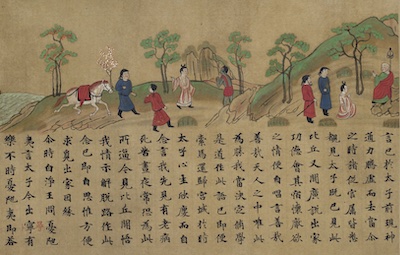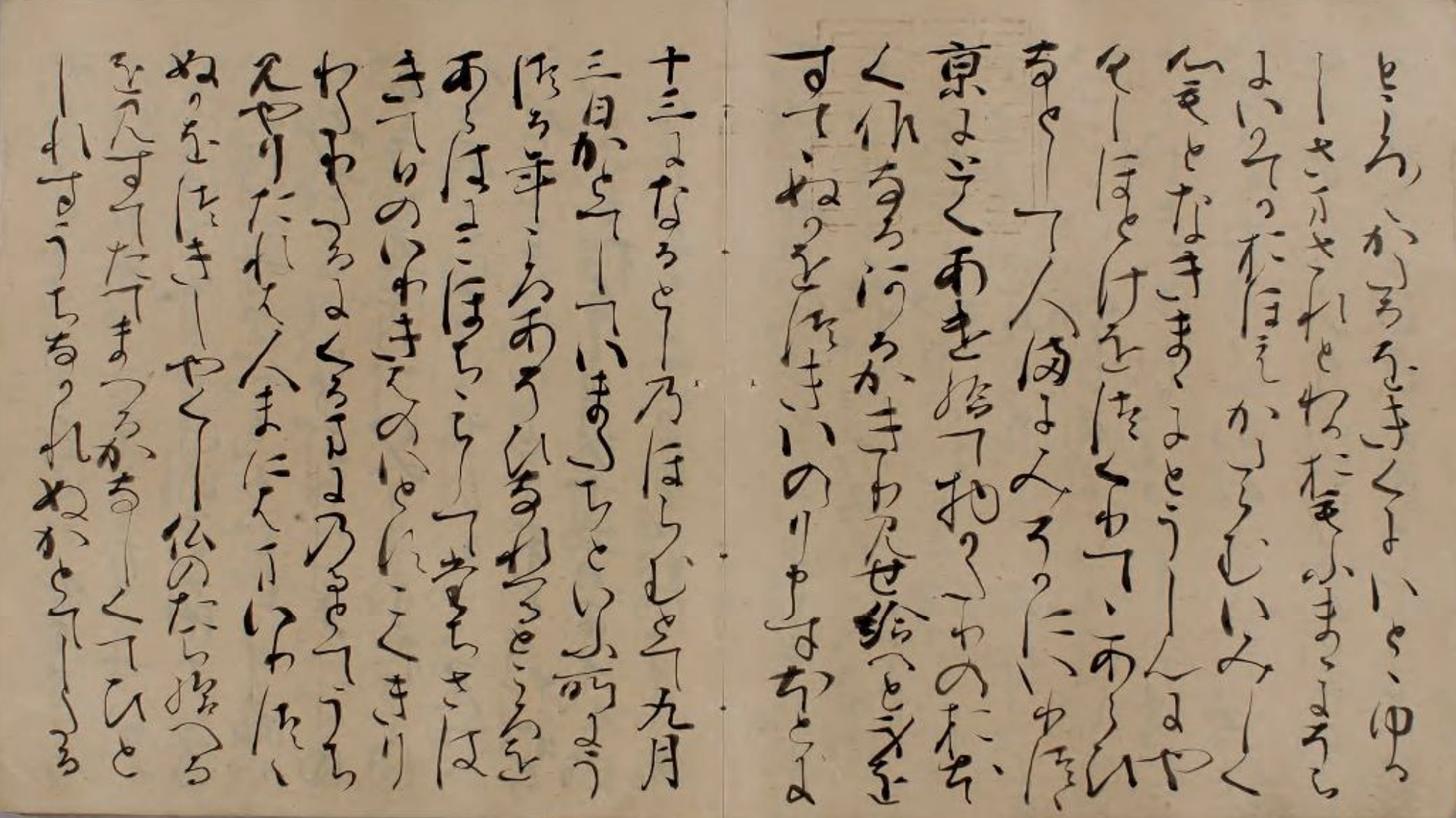
This course is an introduction to Buddhism with a focus on the East Asian Buddhist tradition. Students will learn the basics of Buddhist philosophy and doctrine and will also be exposed to debates and themes in current scholarship on Buddhist Studies. We will examine Buddhism through written texts, and also as a lived religion embedded in specific cultures. You will be able to learn a great deal, and at the same time there will inevitably be large areas left unexplored with many loose ends left untied. This is an introduction; Buddhism is a global and diverse tradition with over two millennia of drift, growth, change, and transformation.
The course also asks you to think more deeply than you may have before about religion as a category and as an aspect of human experience, and to enter into ongoing conversations in the academic discipline called Religious Studies. You will learn a great many facts about Buddhism and its origins, development, transmission, teachings, and practices, and importantly you will also learn something of how scholars approach topics within religious traditions. As with many of the courses you will take in college, this class is an invitation to examine and think about the way you think about things and asks you to deepen and extend your thinking in possibly unexpected ways. We will also think a little about the curation and ownership of texts and the idea of “open source” material in the concrete and the abstract.
Specifically, you will learn: 1) to read primary texts in translation and scholarly secondary sources in a number of disciplines; 2) to think across time, engaging your historical imagination; 3) to think across cultures and open to an empathetic capacity for understanding the unfamiliar; 4) to talk with others about what you have read, to listen, and to revise your opinions through encounter; 5) to write about religion in a clear and cogent way, engaging with sources, synthesizing what you have learned, and contributing new insights. Of course, you will, as indicated above, also learn some things about Buddhism along the way.
The course also asks you to think more deeply than you may have before about religion as a category and as an aspect of human experience, and to enter into ongoing conversations in the academic discipline called Religious Studies. You will learn a great many facts about Buddhism and its origins, development, transmission, teachings, and practices, and importantly you will also learn something of how scholars approach topics within religious traditions. As with many of the courses you will take in college, this class is an invitation to examine and think about the way you think about things and asks you to deepen and extend your thinking in possibly unexpected ways. We will also think a little about the curation and ownership of texts and the idea of “open source” material in the concrete and the abstract.
Specifically, you will learn: 1) to read primary texts in translation and scholarly secondary sources in a number of disciplines; 2) to think across time, engaging your historical imagination; 3) to think across cultures and open to an empathetic capacity for understanding the unfamiliar; 4) to talk with others about what you have read, to listen, and to revise your opinions through encounter; 5) to write about religion in a clear and cogent way, engaging with sources, synthesizing what you have learned, and contributing new insights. Of course, you will, as indicated above, also learn some things about Buddhism along the way.
- Docente: Hank Glassman

Premodern Japanese Literature EALC231a
Fall 2023, Haverford College
Prof. Hank Glassman
TTh 2:30-4:00
VCAM 201
Class Themes and Approach:
This is a course introducing classical and medieval Japanese literature, and also related performance traditions and themes in visual culture. No background in either East Asian topics or in the study of literature is required; all works will be read in English translation.
The course is a chronological survey of Japanese literature from the tenth century to the fifteenth. It will focus on well-known texts like the Tale of Genji and the Pillow Book, both written by women, and the ballad-form Tale of the Heike. Examples of Noh theatre and late medieval religious fiction and a range of images from different genres are also included.
In this class, we will be reading almost exclusively in primary sources in translation. These are mostly noted in bold font below. There are a number of secondary sources (that is, works-about-the-works) on the syllabus, and these are there primarily for use in writing papers. We will say more about this in class. The class will be run as a seminar and rely on participation from each member. There may be occasional short presentations by the instructor, but discussion will take up most of our class time.
Learning Objectives:
• To become familiar with the historical development of Japanese poetry, prose, and drama. We will also pay close attention to the fact of translation itself.
• To learn to think about sources more deeply. What are we reading? How did it get to us? Who preserved it and why?
• To become more comfortable “writing to think.” That is, learning to get ideas down quickly and generating arguments through informal writing.
• To develop skills in talking aloud about texts with others. This means reading carefully and speaking up.
• To explore the process of drafting with peer review and input. Returning to the work to polish and expand it. Working with others to reflect on and improve your writing.
• To practice formal writing in the academic style to cite sources accurately. (We will use Chicago notes/bibliography style for the final paper. You can find guides to this on our Moodle page.)
• To create a substantial final project that engages and synthesizes themes and sources from the course and beyond.
Fall 2023, Haverford College
Prof. Hank Glassman
TTh 2:30-4:00
VCAM 201
Class Themes and Approach:
This is a course introducing classical and medieval Japanese literature, and also related performance traditions and themes in visual culture. No background in either East Asian topics or in the study of literature is required; all works will be read in English translation.
The course is a chronological survey of Japanese literature from the tenth century to the fifteenth. It will focus on well-known texts like the Tale of Genji and the Pillow Book, both written by women, and the ballad-form Tale of the Heike. Examples of Noh theatre and late medieval religious fiction and a range of images from different genres are also included.
In this class, we will be reading almost exclusively in primary sources in translation. These are mostly noted in bold font below. There are a number of secondary sources (that is, works-about-the-works) on the syllabus, and these are there primarily for use in writing papers. We will say more about this in class. The class will be run as a seminar and rely on participation from each member. There may be occasional short presentations by the instructor, but discussion will take up most of our class time.
Learning Objectives:
• To become familiar with the historical development of Japanese poetry, prose, and drama. We will also pay close attention to the fact of translation itself.
• To learn to think about sources more deeply. What are we reading? How did it get to us? Who preserved it and why?
• To become more comfortable “writing to think.” That is, learning to get ideas down quickly and generating arguments through informal writing.
• To develop skills in talking aloud about texts with others. This means reading carefully and speaking up.
• To explore the process of drafting with peer review and input. Returning to the work to polish and expand it. Working with others to reflect on and improve your writing.
• To practice formal writing in the academic style to cite sources accurately. (We will use Chicago notes/bibliography style for the final paper. You can find guides to this on our Moodle page.)
• To create a substantial final project that engages and synthesizes themes and sources from the course and beyond.
- Docente: Hank Glassman